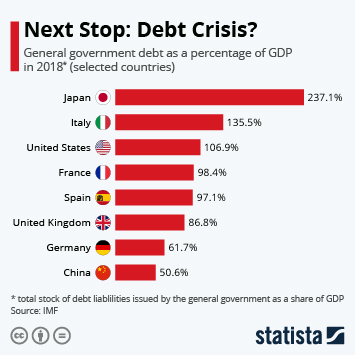A look at the most indebted countries in the world over time shows quite strikingly how being heavily in debt became something more common for high-income countries after having been associated with the developing world just some 10 years ago.
While in 2005, four low-income countries and just one high-income country were among the eight most indebted countries in the world, this scenario was reversed in 2015 when four high-income and just one low-income nation were the most heavily in debt.
Public debt in developed nations accelerated during the 2008 global financial crisis and debt relief to struggling low-income nations had reduced their debts significantly by 2010. These two developments caused a quick turnaround in the national debt narrative seen in IMF data. Eritrea which has been classified as a fragile state is the exception as it failed to qualify for IMF debt relief due to its frail governance structures and lack of working institutions.





















